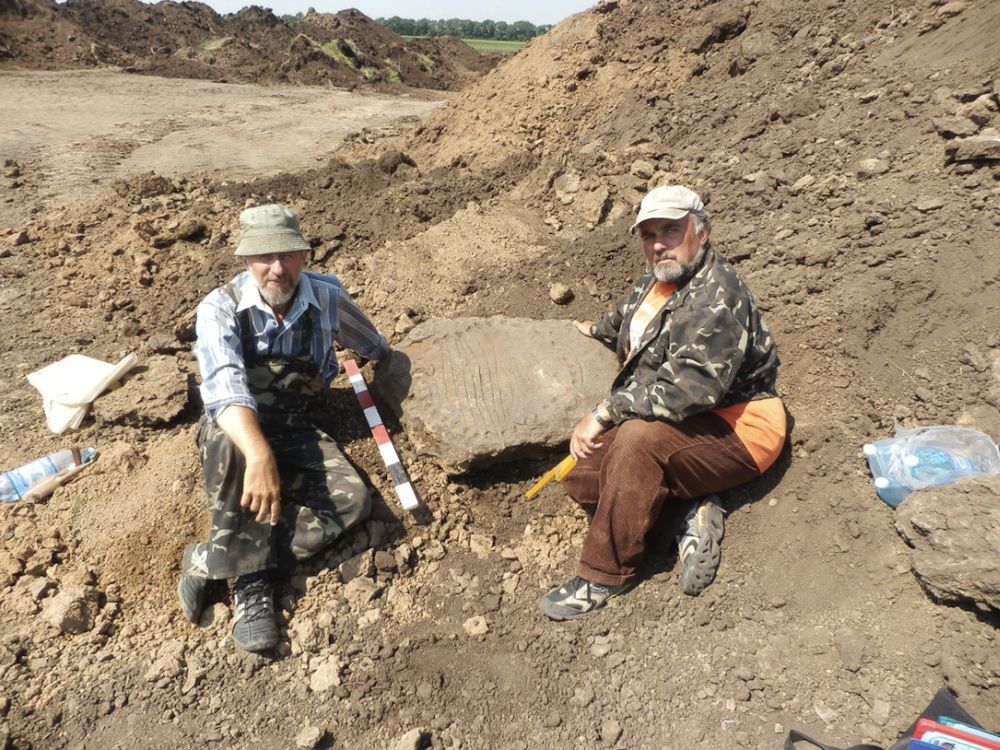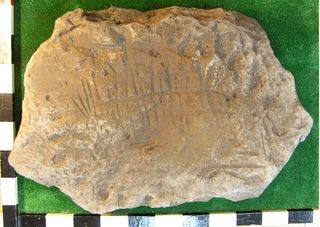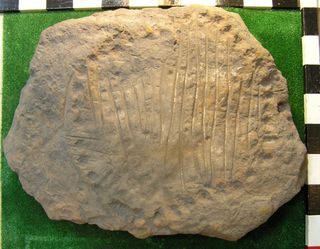Gravetop Sundial Reveals Lost Civilization's Tech Savvy

A carved stone found marking a Bronze Age grave in the Ukraine is the oldest sundial of its kind ever found, a new study reveals.
The sundial may have marked the final resting place of a young man sacrificed or otherwise marked as a messenger to the gods or ancestors, said study researcher Larisa Vodolazhskaya of the Archaeoastronomical Research Center at Southern Federal University in Russia. Vodolazhskaya analyzed the geometry of the tire-size stone and its carvings, confirming the stone would have marked the time using a system of parallel lines and an elliptical pattern of circular depressions.
The elliptical pattern makes the carving an analemmatic sundial. A traditional sundial marks the time using a gnomon, a fixed vertical that casts a shadow. An analemmatic sundial has a gnomon that must move every day of the year to adjust to the changing position of the sun in the sky. [See Images of the Ancient Sundial]
Keeping time
The sundial belonged to the Srubna or Srubnaya culture, known for the timber-framed graves they left on the steppes between the Ural Mountains and Ukraine's Dneiper River.In 2011, a group of archaeologists led by Yurii Polidovich of the Donetsk Museum of Regional Studies was excavating a Bronze Age burial mound dating to the 12th or 13th century B.C. and uncovered the carved slab, which was marked with lines and circles on both sides. In February 2013, the archaeologists sent pictures of the find to Vodolazhskaya, suggesting that she might find it interesting given her work on Bronze Age petroglyphs.

"Having received photos of [the] plates, I pondered the possible interpretations of images," Vodolazhskaya wrote in an email to LiveScience. "One of my hypotheses was associated with a sundial."
To prove the carvings represented a sundial, Vodolazhskaya calculated the angles that would have been created by the sun and shadows at that latitude and confirmed that the carvings on the slabs could have been used to mark the hours accurately.
Sign up for the Live Science daily newsletter now
Get the world’s most fascinating discoveries delivered straight to your inbox.
"They are made for the geographic latitude at which the sundials were found," she said.
How it works
Unlike many modern mass-produced garden sundials purchased and plopped down without a thought to the angle of the Earth and sun, the ancient Ukrainian carvings reveal a sophisticated grasp of geometry.
The circular depressions, placed in an elliptical pattern, are hour marks of an analemmatic sundial; the largest groove on the plate, Vodolazhskaya said, marks where the vertical, shadow-casting gnomon would have been placed at the winter solstice.

Meanwhile, a long carved line transected by a number of parallel grooves in the center of the slab would have acted as a linear scale for a more traditional horizontal sundial, where the hours are marked by a gnomon's shadow falling along hour lines. In this case, the horizontal sundial actually had two gnomons, Vodolazhskaya said. One gnomon tracked the time in the morning hours and early afternoon, and the second covered from late morning to evening, measuring time in half-hour increments. Ancient sundials with half-hour marks are rare, though one was discovered earlier this year at the Valley of the Kings in Egypt.
On the other side of the stone plate is a smaller horizontal sundial, as well as a carved imitation of an analemmatic sundial, this one incapable of marking the correct time. It's not clear why these secondary carvings were made, Vodolazhskaya said, though they may have been a tribute to the deceased. The carvers of the working sundial on one side of the stone may not have been part of the community that inexpertly carved the second side, she said.
The findings appear on the pre-print website arxiv.org. Vodolazhskaya and her colleagues plan to publish the work in the journal Archaeoastronomy and Ancient Technologies.
Follow Stephanie Pappas on Twitter and Google+. Follow us @livescience, Facebook & Google+. Original article on LiveScience.com.

Stephanie Pappas is a contributing writer for Live Science, covering topics ranging from geoscience to archaeology to the human brain and behavior. She was previously a senior writer for Live Science but is now a freelancer based in Denver, Colorado, and regularly contributes to Scientific American and The Monitor, the monthly magazine of the American Psychological Association. Stephanie received a bachelor's degree in psychology from the University of South Carolina and a graduate certificate in science communication from the University of California, Santa Cruz.











